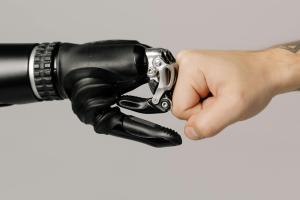AI in Coding, Part 3: Best Practices for Working with Your New Junior Developer
Part 3: Essential best practices for working with AI coding assistants. Treating AI like a brilliant but inexperienced junior developer who needs proper oversight.

AI coding assistants are here to stay. They can generate code, write tests, fix bugs, and even propose architecture. But like any new teammate, they need supervision. The best way to think about AI in your workflow is this: AI is a brilliant but inexperienced junior developer.
Treating it that way gives you the right balance of trust and caution. Let’s go through the practices that make this relationship productive.
Always Review Generated Code
AI writes fast, but it doesn’t understand context the way you do. A function that looks correct might miss important edge cases or even introduce security vulnerabilities. Always review, test, and adapt what it generates. Think of it as code review: except you’re reviewing your AI assistant.
Provide the Big Picture
You’re still the architect. AI can produce snippets, classes, and even full modules, but it won’t naturally see how everything fits together. That’s your role. Give it clear instructions, explain goals, and tie its output into the larger system design.
Mind the Context Window
Every model has limits. If you feed it too much, it may lose focus or hallucinate. If you feed it too little, it may lack the detail needed for accuracy. Know your model’s context window and learn how to scope prompts so that they stay effective.
Don’t Take AI’s Optimism at Face Value
AI is confident: sometimes overly confident. It might tell you a piece of code is production ready when it isn’t. That’s not malice, it’s just prediction. Don’t mistake confidence for correctness. Always verify before merging to production.
Automate Tests and Security Checks
If AI speeds up coding, you need to speed up validation to match. Automated tests, linting, and security scans are your safety net. Build them into your CI/CD pipeline so every AI suggestion goes through the same checks as human-written code.
Test Harder Than Before
AI doesn’t reason the way you do. It can generate subtle bugs that slip past casual inspection. That means you should test more rigorously than ever. Unit tests, integration tests, performance checks: make sure your AI-generated code proves itself under pressure.
Why These Practices Matter
These best practices are not about limiting AI: they’re about enabling it to shine while keeping your projects safe and sustainable. If you treat AI as a trusted but junior teammate, you’ll get the best of both worlds: speed and creativity without sacrificing reliability.
✅ Key Takeaway
AI coding assistants can transform productivity, but they are not autopilot. They’re powerful, optimistic, and sometimes careless. With the right oversight, they become invaluable partners. Without it, they can create bigger problems than they solve.
This article is part of my series “AI in Coding – From Past to Future.”
🎥 Watch the Full Lecture
For a deeper dive into this topic, watch my complete presentation on AI in software development:
Note: The introduction is in Bosnian, but the main lecture is in English and starts around the 3-minute mark.
This lecture covers all the topics in this series and provides additional insights and Q&A.
Full Series:
- Part 1: From Lisp to Copilot: The Evolution of AI in Software Development
- Part 2: AI Tools Every Engineer Should Know in 2025
- Part 3: Best Practices for Working with Your New Junior Developer (this post)
- Part 4: I Let AI Build a Web App Live (Coming October 9)
- Part 5: AI in Coding: How Far We’ve Come (Coming October 13)
- Part 6: The Next 10 Years of Coding (Coming October 16)
- Part 7: Will AI Replace Programmers? (Coming October 20)
- Part 8: Future-Proofing Your Career (Coming October 23)
How do you currently handle AI-generated code in your workflow? Have you found the right balance between leveraging AI’s speed and maintaining code quality? I’d love to hear about your review processes and quality gates.

Irhad Babic
Practical insights on engineering management, AI applications, and product building from a hands-on engineering leader and manager.


